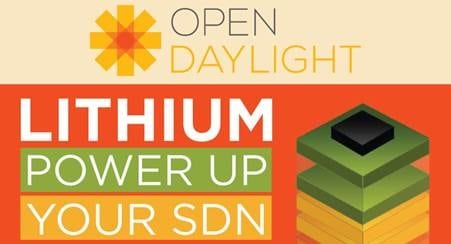The OpenDaylight Project, an open source platform to advance Software-Defined Networking (SDN) and Network Functions Virtualization (NFV), Monday announced the release of OpenDaylight Lithium, its third open SDN software release. The new release promises a carrier grade version with improved scalability and performance that can cater for the Internet-of-Things (IoT) and enhancements that include new security and automation features and new and enhanced APIs for interoperability. It will also be able to provide native support for the OpenStack Neutron framework combined with features such as SFC, Virtual Tenant Networking (VTN) and Group-Based Policy (GBP) which allow users to easily design device, user and group-level policies including customized service chains for firewall, load balancing and other application network services. The release also saw six new protocols being added to the software to support an ever-widening set of use cases, including Source Group Tag eXchange (SXP), Link Aggregation Control Protocol (LACP), IoT Data Management (IoTDM), Open Policy Framework (OpFlex) and Control and Provisioning of Wireless Access Points (CAPWAP).
According to OpenDaylight, with Lithium, service providers and enterprises can transition to SDN with particular focus on broadening programmability of intelligent networks. They can compose their own service architectures or leverage an OpenDaylight-based commercial offering to deliver dynamic network services in a cloud environment, craft dynamic intent-based policies and virtualize functions with Service Function Chaining (SFC). OpenDaylight expects Lithium to be embedded in over 20 commercial products and solutions, as well as the Open Platform for NFV (OPNFV).
Neela Jacques, Executive Director, OpenDaylight
End users have already deployed OpenDaylight for a wide variety of use cases from NFV, network on demand, flow programming using OpenFlow and even Internet of Things. Lithium was built to meet the requirements of the wide range of end users embedding OpenDaylight into the heart of their products, services and infrastructures. I expect new and improved capabilities such as service chaining and network virtualization to be quickly picked up by our user base. We are really happy to see the interest the Telco/NFV community has shown in ODL.
Margaret Chiosi, Distinguished Network Architect, AT&T
As AT&T builds our global SDN controller using ODL components, we look forward to releases like Lithium with clustering and its improved features, important for our controller. Other features like Network Intent Composition and IoT protocols are also beneficial for the platform. We are pleased to see more OpenStack and ODL integration through Neutron and look to ODL to lead the industry in how SDN controllers can consistently interact with OpenStack.




















